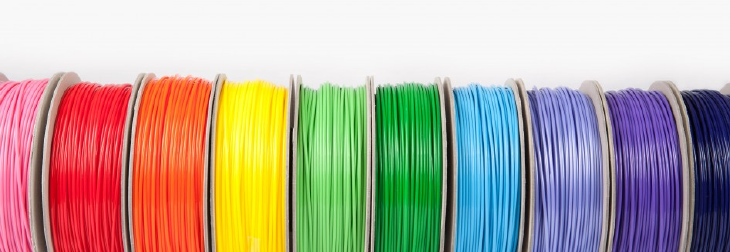Polylactic Acid (PLA) Plastic

Polylactic Acid (PLA) plastic is a thermoplastic polymer that softens when heated and hardens when cooled. It is made from renewable resources, such as corn starch and sugarcane. It is also biodegradable under the right circumstances, which would be a facility where plastic scraps are turned into fertalizer by microbes, which must reach 140 degrees for 10 days, in order to compost the material. PLA cannot be composted in your typical compost heap. PLA plastic is commonly used as filament in 3D printing to create 3D printed parts.
Polylactic Acid (PLA) Plastic in 3D Printing
PLA plastic is used as filament in 3D printing. A user creates a 3D model on 3D software, which is then converted to another format by the 3D printer’s interfacing software. This software slices the model into sections and determines how the printer will print out the layers. The PLA plastic filament then extrudes through a heated nozzle which melts the plastic and lays it down in a single layer. The plastic cools and hardens. Another layer is printed and the process repeats until the part is complete.
History of Polylactic Acid (PLA) Plastic
PLA was discovered in the 1920s by Wallace Carothers, who also invented nylon. He had been working for DuPont in an attempt to find an environmentally friendly plastic. However, commercial use of PLA was too costly. It wasn’t until 1989 when Dr. Patrick R. Gruber, with his wife Sally, discovered how to create PLA from corn on his stove at home which helped to reduce the costs of manufacturing PLA.
To learn more about the latest in 3D Printing, check out our 3D printing.